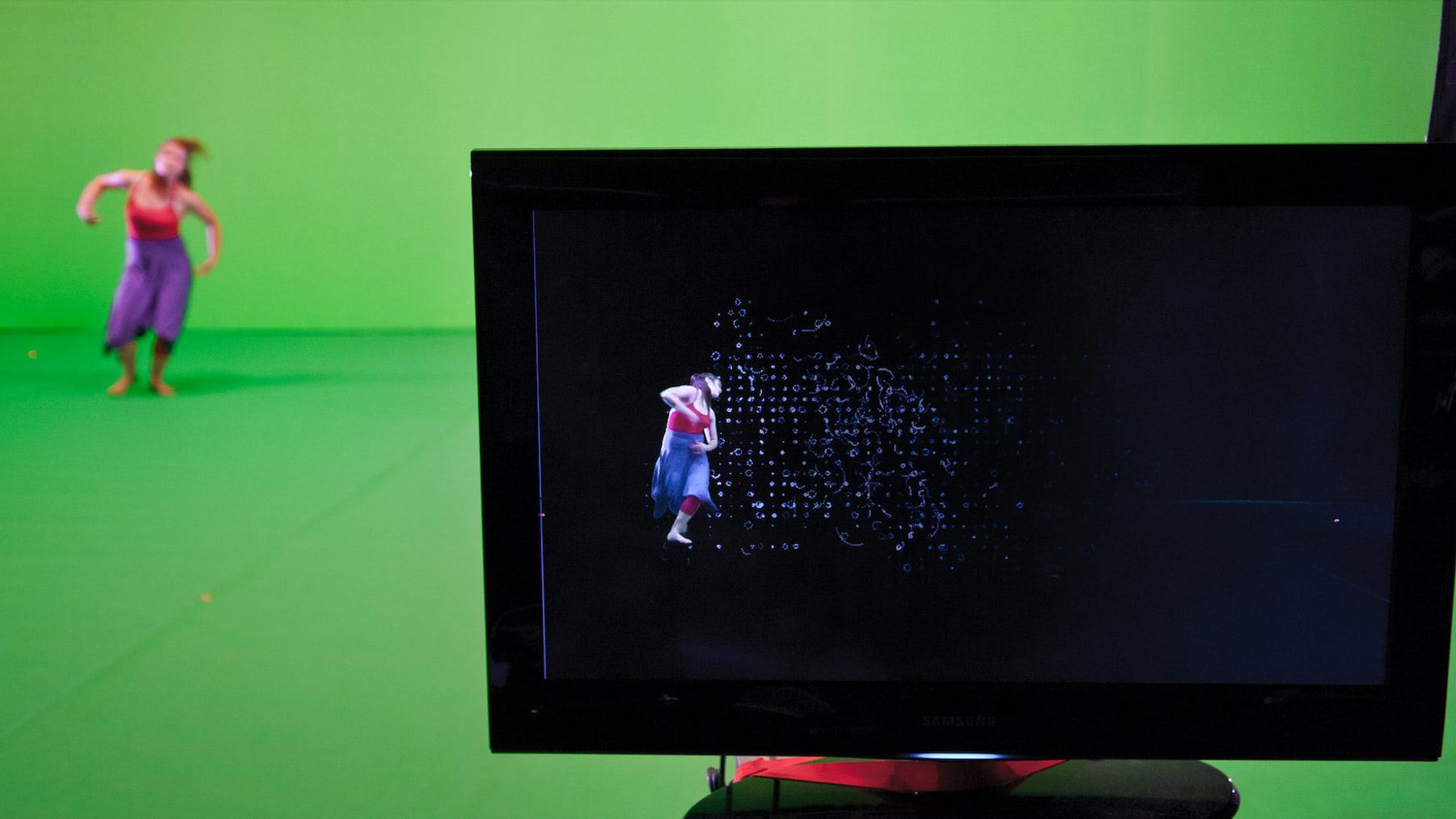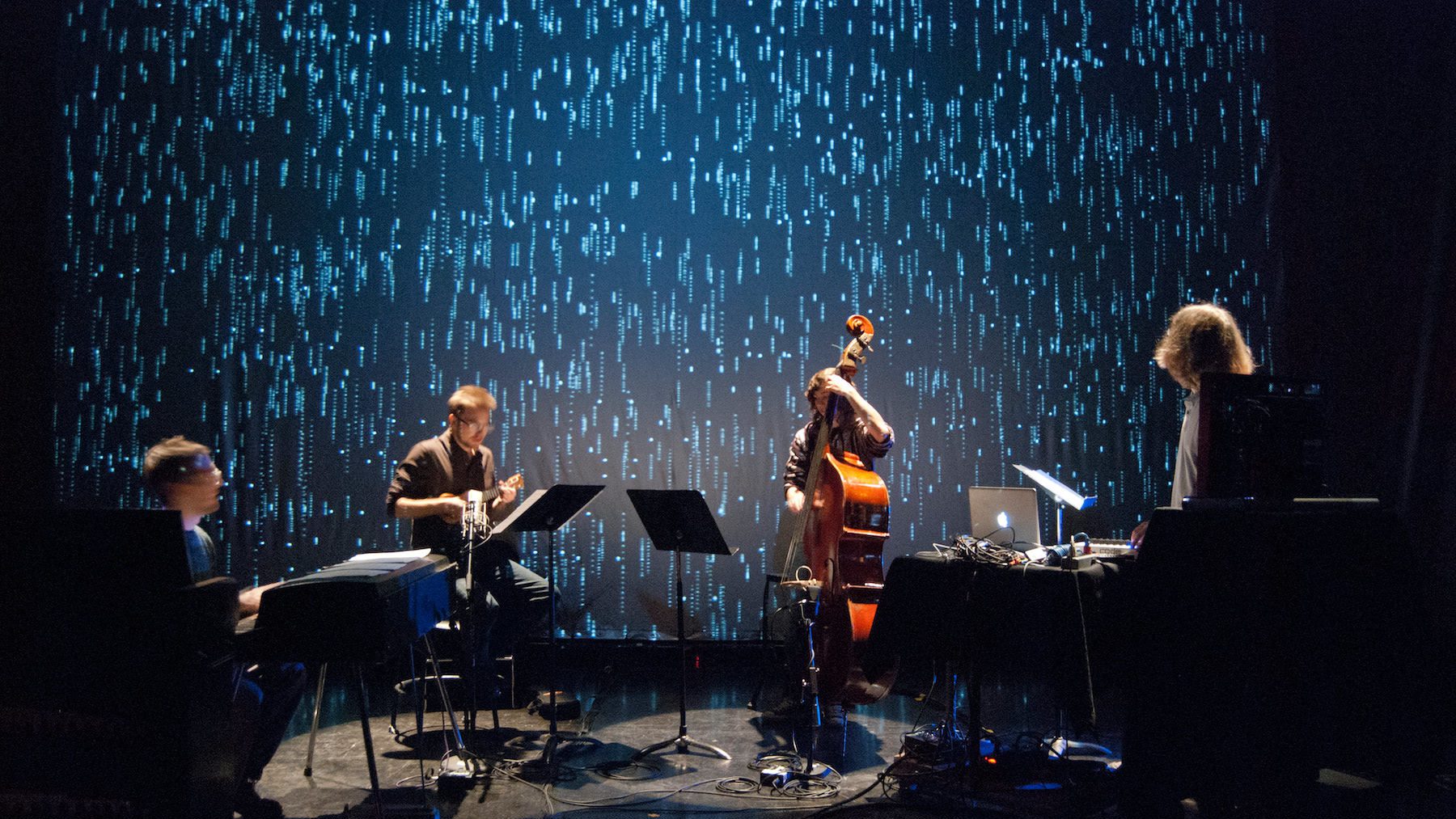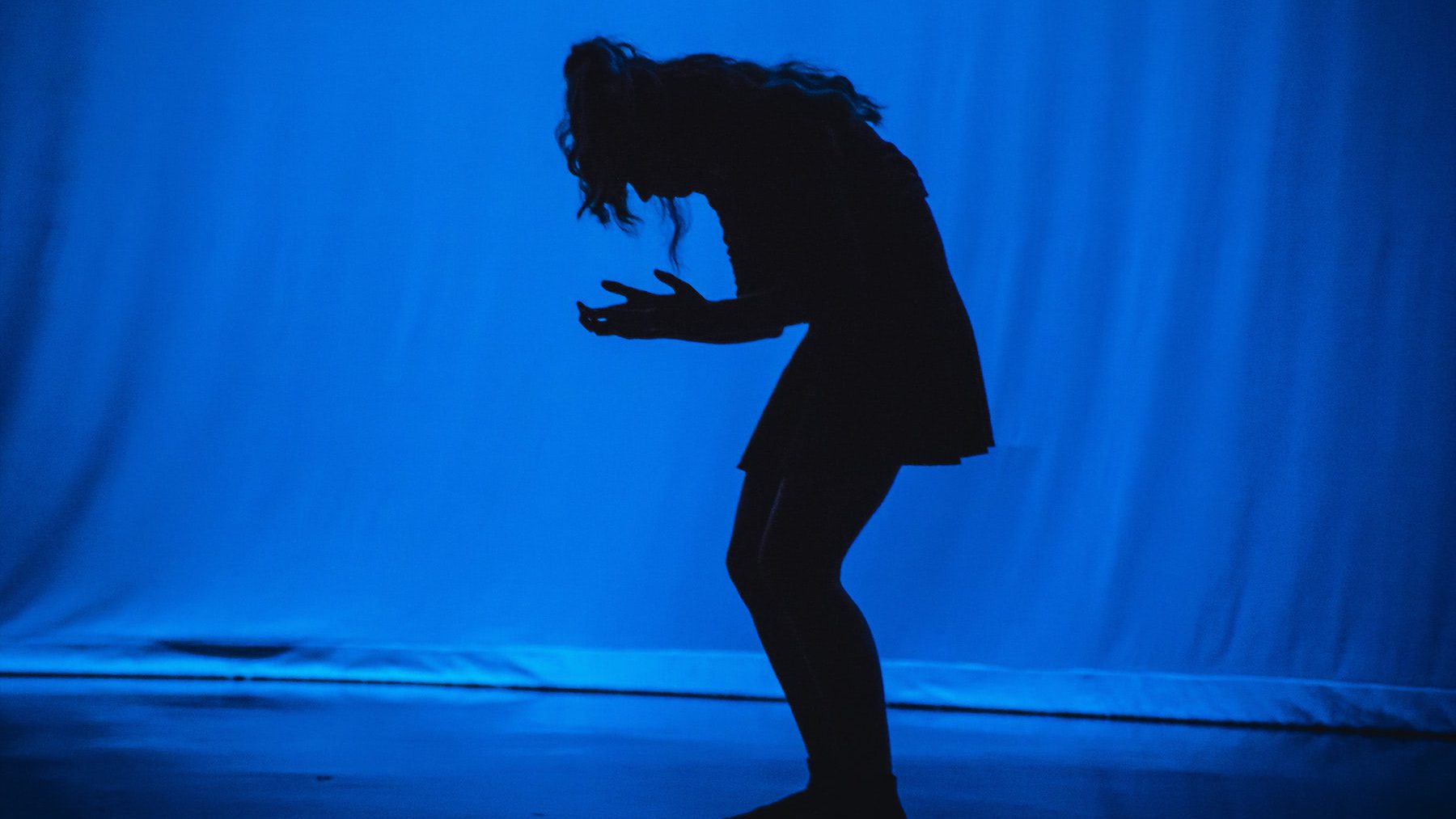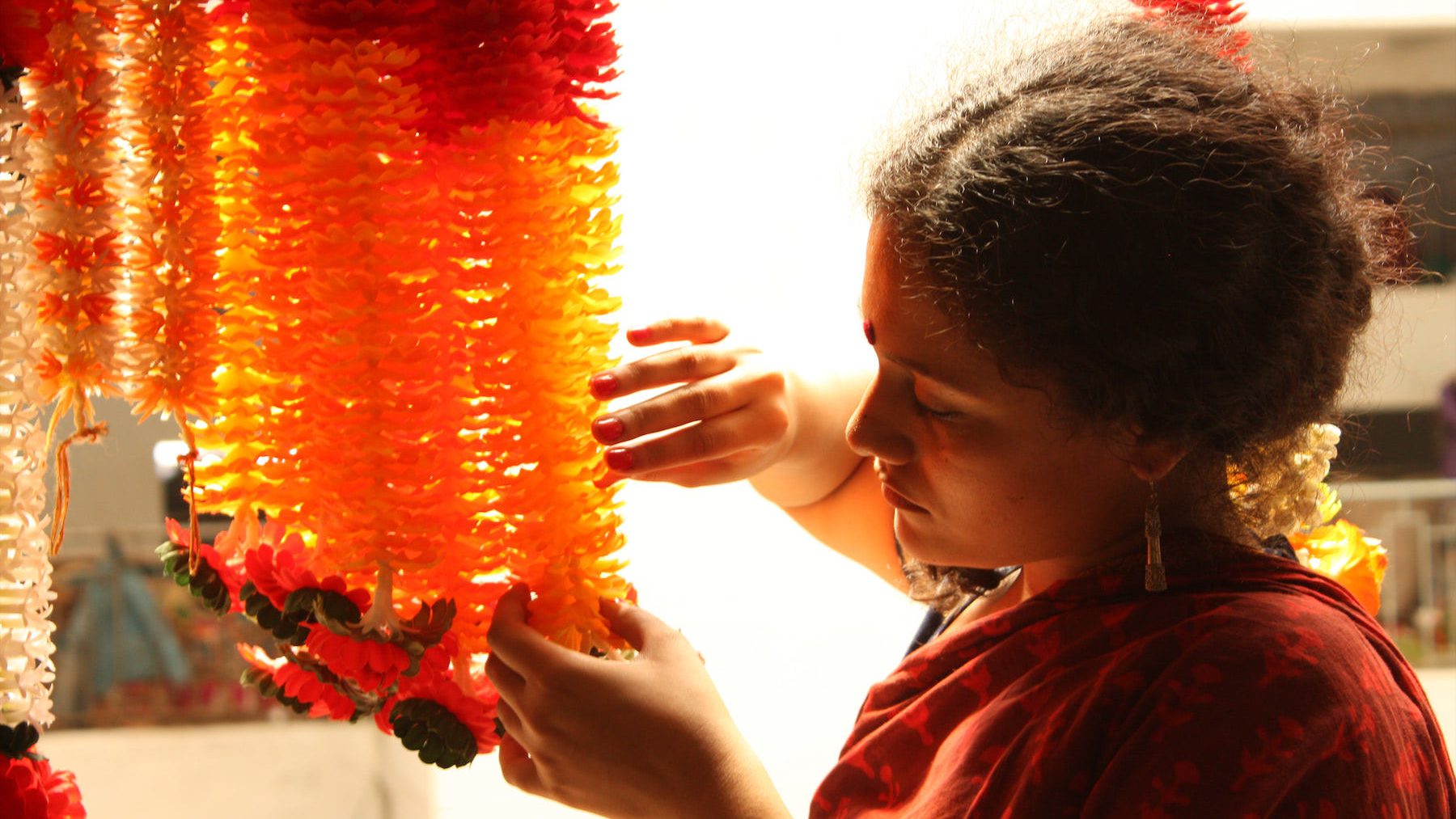The BFA in Interarts Performance is the perfect program for students who have interests in both the visual arts and theater as well as a desire to create original performance pieces. Interarts Performance introduces students to a diverse range of art forms and creative practices from new media to traditional acting skills, with the aim of generating work that blurs boundaries between the visual arts and performance.
Use the form below to sign up for more information: we’ll be in touch with additional details on our Interarts program, admissions, and upcoming events.
Curriculum
The BFA in Interarts Performance includes a balanced combination of studio and academic courses from the Stamps School of Art & Design (Stamps) and the School of Music, Theatre and Dance (SMTD), and academic requirements and electives from across the University. Students are immersed in the cultures of both schools and have the advantage of the academic resources of a major research University.
In this program, you will forge an entirely customized, individual path under the mentorship of the Interarts Performance mentors and advisors. As exciting as a tailor-made path is, Interarts Performance students are required to bring both schools together. It’s a big responsibility and requires proactive, engaged stewardship on your part. While your cohort of Interarts peers will serve as a tight-knit creative network, your individual interests, passions, and talents will inform your curricular path through the program.
Interarts Performance students need 130 credits to graduate, 66 studio credits and 64 academic credits. Students who plan to graduate in four years are expected to complete an average of 16 to 17 credits per term.
| Courses | Credits |
|---|---|
| Required Studio Courses | 18 |
| Elective Studio Courses | 45 |
| Required Academic Courses | 31 |
| Elective Academic Courses | 36 |
| Sophomore Review |
Total Credits: 130

Advising
Holly Hughes is the director of the Interarts program. Interarts students are citizens of both the Stamps School of Art & Design and the School of Music, Theatre and Dance, so they must work closely with academic advisors in both units to develop their curriculum. The Interarts academic advisor for the Stamps School is Romy Hill-Cronin, and the faculty advisor at the School of Music, Theatre and Dance is Tzveta Kassabova.
Most classes in SMTD are open to Interarts students, including many in Design and Production, Theatre Studies, Movement, Devising, Playwriting, Dance, Vocal Performance, Acting for Non Majors, Performing Arts Management, Design Practicums and Performing Arts Technology, but may have smaller enrollment caps than those in Stamps or enforced prerequisites requiring advance planning with your SMTD advisor.
Please note that a few majors in STMD, such as the BFAs in Performance (Acting) and Musical Theatre, are only open to students who have specifically auditioned and been accepted into those programs with no exceptions, but students interested in acting will have many opportunities to study performance in other classes.

Studio Courses
Interarts Performance majors complete 24 credits of introductory courses, split evenly between Stamps School courses and Theatre & Drama courses. Nine of the credits are in required courses: ArtDes 125, ThtreMus 101, and ThtreMus 240, 250, or 256. More advanced coursework may be substituted on a case-by-case basis when deemed appropriate by the Interarts faculty. Interarts Performance majors complete 33 credits of advanced studio coursework, split between Stamps School courses and Theatre & Drama courses, and 9 credits of the Integrative Project (IP), the capstone year-long course taken during the fall and winter terms of the BFA student’s final year.
Advanced Studio Electives
Following the completion of introductory courses, students work closely with faculty to develop an individual program of elective courses that addresses their educational goals. Students choose 18 credits of Stamps (ARTDES), at least one at a 400-level, and 15 credits of T&D (THTREMUS) current elective studio offerings, as well as classes in Dance and Performing Arts Technology.
Elective Studio courses vary each semester — please visit the following links to view this semester’s offerings:

Academic Courses
Academic courses in Stamps and SMTD are designed to engage students in the history of art, design and performance.
Penny Stamps Lecture Series
The Penny Stamps Speaker Series brings respected leaders and innovators from a broad spectrum of creative fields to Ann Arbor to conduct weekly public lectures and engagements. Students must enroll in the 1‑credit/semester Lecture Series and attend the weekly lecture for 7 of 8 semesters during the program.
Interarts Academic Courses
Interarts Performance majors must take INTPERF 150: Live Art Survey, and must enroll in INTPERF 160: Interarts Forum each Fall semester. Students cannot engage in classes, extracurriculars, or other activities including but not limited to band, sports, theatre, glee club that conflict with participation in Forum or Survey.
Courses are listed under “INTPERF” in course guide — see current offerings here.
| Course Title | Course # | Credits |
|---|---|---|
| Interarts Performance Forum | 160 | 12 |
| Live Art Survey | 150 | 3 |
Art and Design Academic Courses
One 3 credit Stamps academic course is required. Students have the option of taking ARTDES 150 (Art and Design in Context) or ARTDES 151 (Art and Design History).
Theatre & Drama Academic Courses
Two 3‑credit academic courses in T&D are required (THTREMUS) — for more information, consult your T&D advisor.
University Academic Courses
Students in the Interarts Performance program participate in the rich intellectual and academic life of a top tier university by taking University Academic courses. Liberal Arts Requirements are designed to develop basic familiarity with the three traditional components of liberal arts — humanities, social sciences, and natural sciences. The goal is to enhance analytical reasoning, to encourage empathy with other cultures, and to understand contemporary environmental issues. Interarts students fulfill seven specific liberal arts requirements and choose additional elective courses to equal 36 credits. Students must earn at least three credits in each specific area of the liberal arts, but may use one course to meet two or even three requirements.
| Requirement | Course Info | Credits |
|---|---|---|
| First Year Writing | LSA Course Guide: “FYWR” | 3 – 4 |
| Social Science | LSA Course Guide: “SS” | 3 |
| Natural Science | LSA Course Guide: “NS” | 3 |
| Analytical Reasoning | LSA Course Guide: “MSA”, “QR/1”, “QR/2”, or any course in logic. | 3 |
| Environmental Studies | Any course in the LSA Course Guide with the subject code ENVIRON. This includes courses cross-listed as ENVIRON. Other courses that meet the requirement are ARCH 357; BIOLOGY 101, 102, 109, and 171; EARTH 109, 114, 148, 154, 156, 277 and 331; ENGLISH 320 and 328; as well as URP 423. | 3 |
| Cultural Diversity | LSA Course Guide: “RE” | 6 |
| Humanities | LSA Course Guide: “HU” | 3 |
| Academic Electives | Choose additional courses to equal 36 credits. |

Integrative Project
In the 9‑credit Integrative Project, seniors use the techniques, concepts and skills they’ve learned to plan, conceptualize, and build a single project of their choosing over the course of their final year. With the help of faculty advisors, they manage their own creative process and working schedules, and work in their own dedicated studio space. The project culminates in a final presentation where the student engages the public through exhibition, publication or performance, and is documented in a written thesis, website, and digital portfolio.
| Course Title | Course # | Credits |
|---|---|---|
| Integrative Project | 498/499 | 9 |
Reviews
Students must complete a Sophomore Review and a mid-year IP Critique during their senior year.
In the Sophomore Review, students present their work to date to a committee of faculty members.
The Sophomore Review is an opportunity for students to pause and take stock of how far they have come and what they can do to become the creative practitioners they aspire to be. While the Stamps faculty is always available to offer advice and suggestions, the Sophomore Review formalizes this process. It serves as part of their professional development and prepares them for other important assessments, such as performance reviews in their careers and/or critiques in graduate school.
Sophomore reviews create an opportunity for:
Students to have in-depth reflection on achievements, challenges, and risks taken within the program.
Students to define ideas, interests and future plans, and receive faculty feedback and advice.
Faculty to assess the student’s work and progress to date and provide in depth mentoring and recommendations.
Work will be evaluated by the faculty committee according to the following criteria:
Evidence of visual skills
Evidence of making skills
Evidence of creative and design process strategies
Evidence of critical reflection
Understanding how work fits into context
Articulation of future goals
Presentation
Participation in the Sophomore Review is required, and unless they are dual degree students, students must participate in April of their sophomore year; they will receive a copy of the Sophomore Review report by email in May. These reviews represent a significant professional and creative milestone.
The IP Critique is an opportunity for students to receive faculty advice and feedback midway through the year-long Integrative Project. Details regarding preparation for the IP Critiques are discussed in the individual IP classes.








